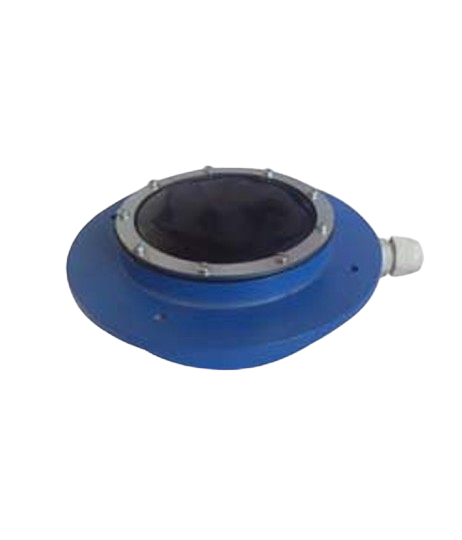Chute Jam vs Conductivity Level Switches: Which One Is Right for Your Application?
Chute Jam vs Conductivity Level Switches: Which One Is Right for Your Application?
Blog Article
 This article provides an objective, SEO-friendly comparison of Chute Jam vs Conductivity Level Switches, helping you determine which solution aligns best with your operational needs.
This article provides an objective, SEO-friendly comparison of Chute Jam vs Conductivity Level Switches, helping you determine which solution aligns best with your operational needs.
Understanding Chute Jam Level Switches
A Chute Jam Level Switch is a device specifically designed to detect blockages or jams in conveyor chutes. It typically operates using paddle, tilt, or proximity-based sensors that activate when material flow is disrupted.
Key Benefits:
-
Prevents system damage due to material buildup
-
Reduces equipment wear and tear
-
Minimizes production downtime
Common Applications:
-
Mining and bulk material handling
-
Cement and aggregate industries
-
Food and grain processing
Chute Jam Level Switches are ideal where material flow interruptions need to be detected instantly to protect machinery and avoid process inefficiencies.
Understanding Conductivity Level Switches
A Conductivity Level Switch, on the other hand, uses electrical conductivity to sense the presence or absence of a liquid. When a conductive liquid touches the probe, it completes a circuit, sending a signal to the control system.
Key Benefits:
-
Simple, reliable design with no moving parts
-
Suitable for conductive liquids like water, acids, and caustics
-
Highly accurate level detection
Common Applications:
-
Chemical processing
-
Water treatment plants
-
Pharmaceutical and food industries
Conductivity Level Switches are best suited for applications involving electrically conductive fluids where precision and low maintenance are essential.
Chute Jam vs Conductivity Level Switches: A Comparative Analysis
| Feature | Chute Jam Level Switch | Conductivity Level Switch |
|---|---|---|
| Working Principle | Detects mechanical obstruction | Senses electrical conductivity in liquids |
| Application Type | Bulk solids and powders in motion | Static conductive liquids |
| Industry Suitability | Mining, aggregates, grain | Chemical, food, pharma |
| Maintenance | Low, with periodic checks | Very low, no moving parts |
| Installation | Inline with chutes or conveyor belts | Tank or pipe-mounted |
Tradeoffs and Considerations
While Chute Jam Level Switches are effective in environments with bulk solids or powders, they are not suitable for liquid-level detection. Conversely, Conductivity Level Switches offer accurate liquid-level control but are ineffective in dry material applications.
Challenges with Chute Jam Level Switches:
-
Must be precisely calibrated for different materials
-
May require mechanical protection in harsh environments
Challenges with Conductivity Level Switches:
-
Only work with conductive liquids
-
Sensitive to coating or buildup on the probe
Selecting between Chute Jam vs Conductivity Level Switches hinges on your application medium (solid vs. liquid), material properties, and the operational environment.
Making the Right Decision
When choosing between a Chute Jam Level Switch and a Conductivity Level Switch, ask yourself the following:
-
Is the material a solid or liquid?
-
Is conductivity a property I can rely on?
-
Do I need real-time jam detection or fluid level monitoring?
-
Is the environment dusty, corrosive, or wet?
Answering these will help align your choice with the functional demands of your operation.
Conclusion
Both Chute Jam Level Switches and Conductivity Level Switches play vital roles in different industrial applications. By understanding their unique features, advantages, and limitations, you can make an informed choice tailored to your specific needs.
Whether you're working with dry bulk solids or conductive liquids, selecting the correct level switch enhances safety, reduces downtime, and improves process efficiency. Carefully consider your application and operating conditions to choose the right solution.
Top 5 FAQs on Chute Jam vs Conductivity Level Switches
1. What is the main difference between a Chute Jam Level Switch and a Conductivity Level Switch?
A Chute Jam Level Switch detects material flow obstructions, while a Conductivity Level Switch senses liquid levels based on electrical conductivity.
2. Can a Conductivity Level Switch be used for solids?
No, Conductivity Level Switches are designed only for conductive liquids, not for solids or powders.
3. Are Chute Jam Level Switches suitable for wet environments?
Yes, but ensure they are sealed and rated for the environmental conditions they will operate in.
4. What liquids are compatible with Conductivity Level Switches?
They work best with conductive liquids such as water, acids, alkalis, and certain food-grade liquids.
5. How do I choose between a Chute Jam Level Switch and a Conductivity Level Switch?
Consider the material type, environment, sensitivity needs, and maintenance preferences. Solids need chute jam detection; liquids need conductivity sensing.